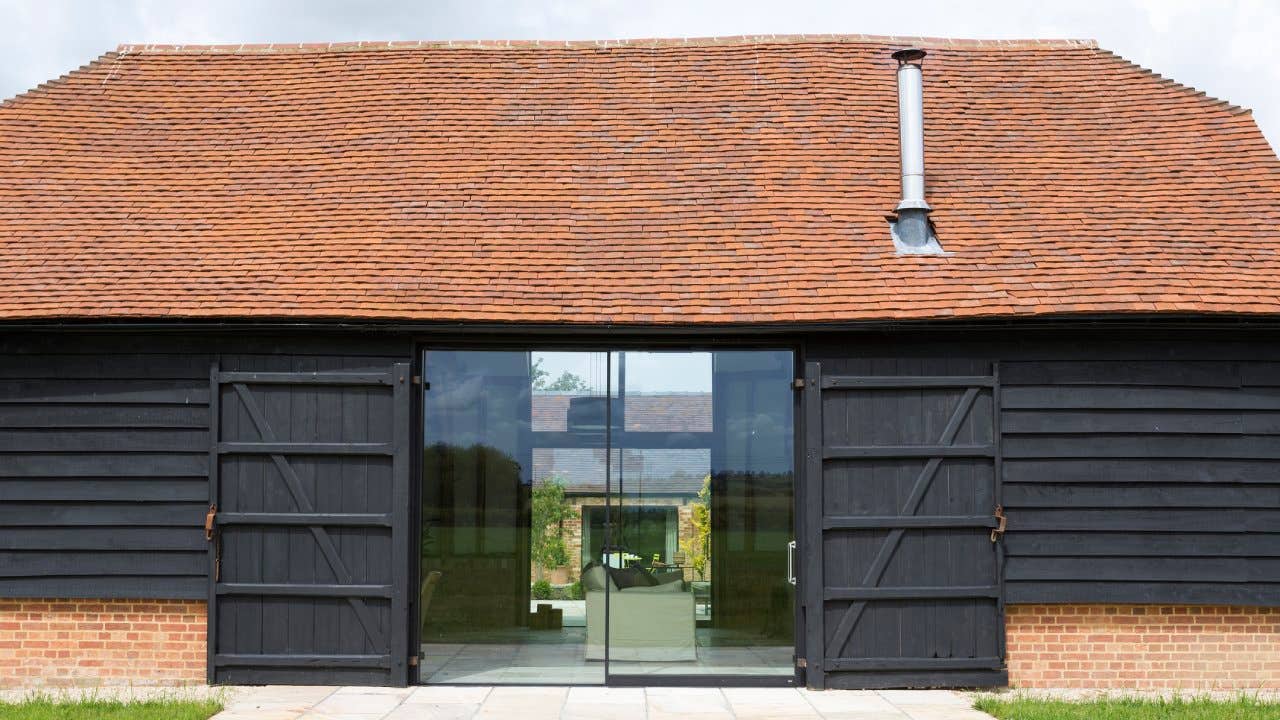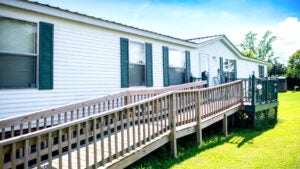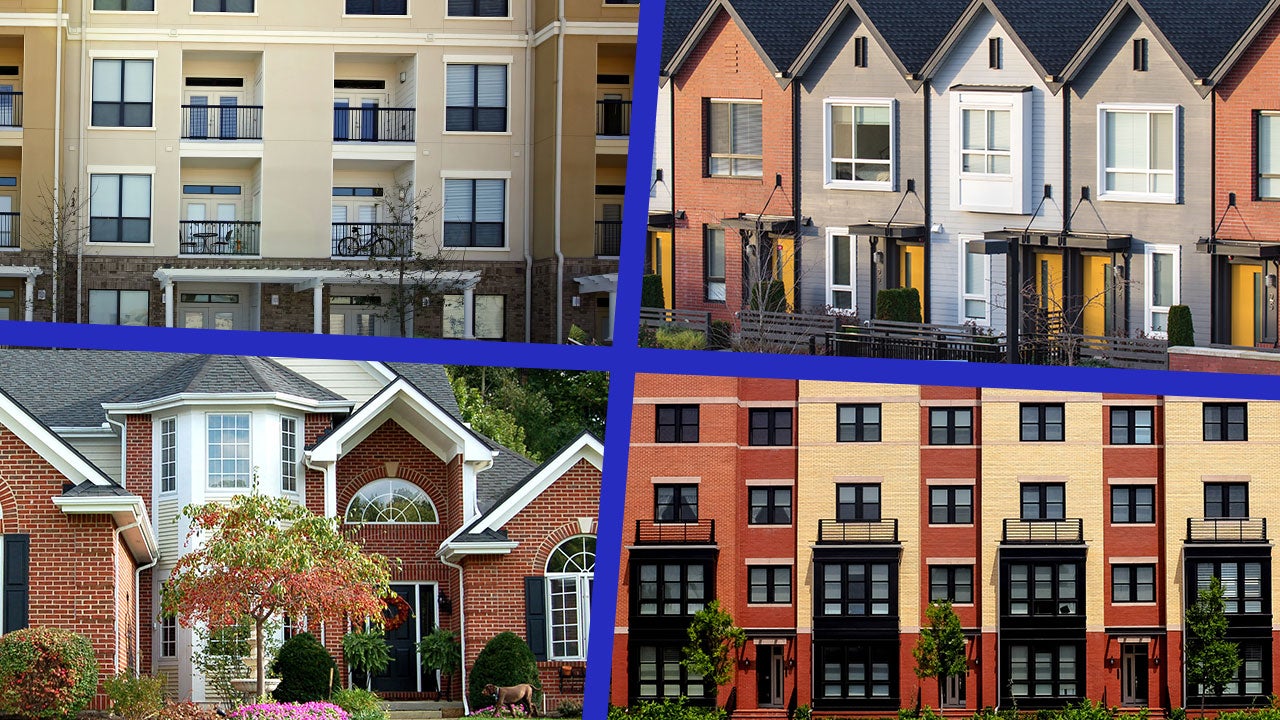What is a barndominium?

You know what a barn is. You know what a condominium is. But have you ever heard of a barndominium? If you haven’t yet, you will soon (especially since you’re reading this).
Barndominiums (barndos for short) are one of the fastest-growing trends in residential housing. Basically, they’re converted barns or newly constructed barn-shaped buildings, usually made of metal. By combining some of the structural components of agrarian buildings with the upscale touches of modern design, these structures bring together rural and urban architecture to create an innovative mix of both worlds.
In the past two years, buyer interest in barndos has been on the rise, in part because of style and in part due to affordability and quicker construction, according to HomeLight’s Top Agent Insights for Summer 2022 report. They’re an increasingly popular option for single-family homes, particularly in rural markets away from the coasts — Texas, Tennessee and Montana are especially popular locations.
So is the barndominium trend one that you want to take part in? Is this house style right for you? Let’s raise high the roof beams and reveal everything you need to know about barndominiums.
What makes a house a barndominium?
As the name suggests, a barndominium is a sort of mash-up of a barn and a condominium. There are two basic types:
- The converted barn, an actual agricultural structure for housing foodstuffs, animals or equipment that is turned into a residential structure.
- The new build, a structure that’s shaped like a barn but was never meant to serve that purpose. It’s just capturing the style and layout of the renovated version.
While the term was originally coined for converted barns, the new-build model now is getting more common. In fact, there is some controversy — “It’s almost a religious battle at this point” — over how barndominiums should be defined, according to Don Howe, Editor-at-Large for BarndominiumLife.com. Some purists argue that if the structure is made with any amount of wood, it is not a barndo. Don’t get too caught up in it, though. “As long as the outside is metal and it’s done in a barndo style,” it counts as a barndominium, Howe feels.
What barndos look like
Whether converted or new, the barndo’s structure utilizes a steel frame that contains a spacious and open floor plan interior. Jon Lahey, a Rockville, Maryland-based Realtor and founder of The Fine Living Group at eXp, says they will often have “space for living and a garage or wood shop area under the same roof.”
To create that space, many barndominiums have super-tall vaulted ceilings (as high as 18 feet) and utilize a loft style to maximize space, the way a barn uses hay lofts to provide overhead storage. This leaves lots of room for a layout that can be customized to homeowners’ needs. It “can be personalized for large families or someone who wants plenty of room for a studio or workshop,” Lahey says.
“Using the large open space, these homes can also include big kitchens and living rooms, lofts and anything the homeowner wants, whether it is a luxurious space or something more rustic,” he explains.
How much does it cost to build a barndominium?
Barndominiums first became popular in part because the cost of converting a barn to a home was relatively affordable — abandoned barns can sell for less than houses and leave a lot of room for customization and repurposing. But there are only so many barns out there, and they are only available in certain areas. If you want the barndominium style on your own terms and in your preferred location, you’ll likely have to build.
There are two ways to go about building a barndominium: There are kits that provide you with the material that you need in order to actually build the structure, which comes together in a predetermined style, or there is the fully custom option.
If you opt for a kit, the price will vary widely depending on what model you purchase. According to HomeAdvisor, a barndominium kit can cost anywhere from $5,000 to $70,000. Kits typically offer the outer shell of the home, and you’ll be able to dictate some of the layouts inside of it.
You’ll still be on the hook for much of the material outside of the frame and the labor to put it all together, which can add significant cost or require lots of work and know-how. If you hire a contractor, expect their labor will cost up to 20 percent of the total project expenses. Overall, that runs on average $225,600 to $288,000 for a barndominium of 2,400 square feet.
Alternatively, you can go for a fully custom design. According to HomeAdvisor, this could cost you more than $500,000, and you should expect to pay about $94 to $120 per square foot. That’s cheaper than the cost of constructing a traditional home, but it’s obviously not cheap. A barndominium costs $94 to $120 per square foot, depending on the finishes you choose and the cost of labor in your area, HomeAdvisor estimates. For comparison, building a house usually costs $100 to $200 per square foot.
“With the rapidly changing prices of building materials and labor, a lot of it comes down to your specific market and what’s available at the time,” Howe notes. “That said, you can expect that building a barndo will be anywhere from 10 percent to 40 percent cheaper than building a traditional home.”
What do converted barns cost?
By comparison to building a new barndominium, you may find it cheaper to find an existing barn and retrofit it into a home. The cost will vary significantly depending on how big the barn is, how much work needs to be done for the conversion, and what exactly you’re looking for out of your home. The average cost of conversion is about $30,000, according to House Digest, a home renovation reference site.
While that may sound affordable, just know that it is a significant undertaking. “When converting a barn, homeowners will need to consider the time and costs of adding concrete floors, running plumbing and electric wiring, and adding heating and cooling systems,” Lahey says. “Location is often the deciding factor as to building new or retrofitting an existing barn, so many homebuyers who want a bardo will need to look at a new build.”
What are the advantages of barndos?
Barndos are growing in popularity for a reason. People want homes, and construction takes time. It takes less time with barndos, thanks to their simple “pole” build style.
On top of going up fast, barndos go up cheap, or at least cheaper than traditional single-family homes. “Even with new construction, the cost of a barndominium can be less than a traditional home per square foot,” says Lahey. This is due to the steel exterior, which saves costs on some of the more decorative design choices like brick exteriors or roof shingles. It also cuts down on maintenance costs, as steel is much easier to maintain than the alternatives that are used in more traditional home projects. A side effect of this that homeowners may appreciate is cheaper insurance, as well. The materials being less expensive can help to keep the cost of insuring the building down.
Another reason that barndos are popular is the fact that their construction is more eco-friendly than many traditionally built homes’. “New models can also be designed to be energy-efficient by sealing the building, installing double-pane windows and spraying foam insulation,” Lahey says.
And finally, they offer a large and unique living space, one that’s highly flexible and adaptable to a variety of life- and work styles.
What are the downsides of barndos?
Of course, barndos aren’t for everyone — and they especially aren’t for every situation. Some regions are not ideal for these buildings due to the climate and weather conditions that they are likely to be exposed to. Areas that experience particularly extreme cold temperatures during the winter may not be ideal for barndos. While you can insulate them and find ways to heat them, barndos do require more winterization efforts than other types of homes.
Also, you need to be a country mouse — not a suburban or even exurban mouse. To make the most out of a barndominium, you’ll need a large piece of land. In today’s work-from-home environment, that may be fine, especially if you’d like to get off the grid. But it may mean incurring more costs, too, for things like sewage systems. And it can limit your choices in terms of where to live or relocate.
Another problem: Some municipalities have also outlawed the building of metal pole structures, as barndos are also called, making it impossible to build a new barndominium within their borders. Sometimes they cite concerns about the safety and structural integrity of the buildings, as Arnold, Missouri, did when banning barndo conversions in 2021. Other counties or HOAs just don’t like the way they look.
Finally, you may also find it difficult to land financing for these homes. While theoretically, it should be like applying for any construction loan, many lenders aren’t familiar with barndos; certainly, finding comps on which to base their appraisals may be difficult. Instead of a traditional bank, BarndominiumLife’s Howe recommends trying a federal farm credit bank (FCB) or other local agrarian-oriented lender.
You may also run into problems with your homeowners insurance company if they aren’t equipped to cover barndominiums, which means you’ll have to shop around for an option that will protect your home.
Final word on barndominiums
Barndominiums are a unique option for people looking for housing, and they speak to the moment. They offer quick and more affordable construction, an eco-friendly build and lots of customization to help meet the needs of a modern family.
However, there is still a lot of unknown when it comes to barndos. It’s unclear how well they will hold their value, especially if some cities and municipalities ban or restrict them. Trends can change fast, and barndos may prove to be just a fad. But there’s also the chance they are the homes of the future.
Why we ask for feedback Your feedback helps us improve our content and services. It takes less than a minute to complete.
Your responses are anonymous and will only be used for improving our website.






